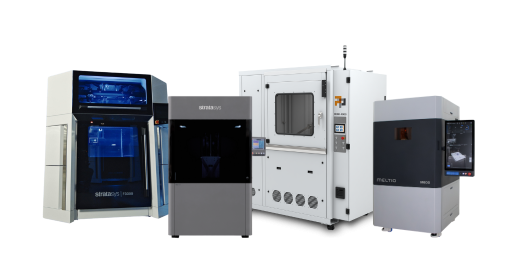3D printers
High quality 3D printers

Simply fill out the form behind the button and receive a free sample of a technology of your choice!

When 3D printing was conceived in the 1980s, the focus was on accelerating the prototyping process, and 3D printing has undoubtedly fulfilled this focus to the point of perfection in rapid prototyping. In the late 2000s and early 2010s, 3D printing also developed into an excellent solution for single pieces and small series, thanks to its extraordinary speed and ever-increasing variety of materials.
However, for a long time, 3D printing was not reliable enough for large-scale production. In particular, 3D printers from the early 2010s could not yet match the component consistency of conventional manufacturing methods – but today's industrial printing systems will undoubtedly make up for this shortcoming.
In recent years, Additive Manufacturing and its pioneers have turned their attention to scaling this technology up to series production, with several systems proving successful. These systems impress with an exceptional degree of automation, outstanding precision and repeatability, and a wide range of materials for use across industries.
The leap to full additive serial manufacturing was finally made in 2022 with the production cell V1 from Additive Automation. This cell, equipped with a robotic arm, several 3D printers and a complete washing routine, automates the entire printing process and thus massively reduces the human effort required.
Filament-based 3D printing is the best-known type of additive manufacturing and scores highly in terms of low material prices and very high printing speeds.
Filament 3D printing is divided into the technologies Fused Depositon Modelling or Fused Filament Fabrication (FDM or FFF) and Fused Granular Fabrication (FGF). You can find more specific information about this type of 3D printing by clicking the button below!
Resin 3D printing is the oldest form of additive manufacturing and offers unparalleled surface quality and very high precision, among other things.
This type of 3D printing is categorised into stereolithography (SLA), PolyJet™, Digital Light Processing (DLP) and Lubricant Sublayer Photo-curing (LSPc®), among others. You can find more specific information about this type of 3D printing by clicking the button below!
3D printing with polymer powders is particularly impressive due to the easy recyclability of the materials used and the excellent mechanical properties of the components.
Within this category, a distinction is made between selective laser sintering (SLS), binder jetting and selective absorption fusion (SAF™). You can find more specific information about this type of 3D printing by clicking on the button below!
The latest development in 3D printing is metal additive manufacturing, which offers unlimited design freedom and affordable prices.
A distinction is made between laser-based processes (e.g. SLM, DMLS and EBM) and sinter-based processes (e.g. CMF, MBJ, BMD and MFFF). You can find more specific information about this type of 3D printing by clicking on the button below!
With the production cell, a large part of the manual work that is still required for highly automated printers is carried out by the robot arm.
The production cell can automate the following work steps: insertion of the building plate, removal of the building plate, building plate storage and a full cleaning routine. You can find more specific information about this type of automation by clicking on the button below!

In medical technology, the risk of contamination of any kind is greatly reduced by minimising human interaction with the machines and components, which is essential in order not to endanger patients. Possible components include surgical instruments, medical models, prostheses and implants.

The automotive industry is adopting a mass-production approach to prototyping and the production of end-use parts, for which 3D printing automation is ideally suited. Possible components include functional prototypes, interior fittings, performance parts and various engine components.

The combination of a high degree of automation and ESD-safe materials means both increased productivity and improved employee safety for the electronics industry. Possible components include electronic housings, functional prototypes, isolators and sensors.

Mass production is a constant in almost every industry, as are consumer goods, which are produced in the millions and are becoming increasingly consistent thanks to highly automated 3D printing. Possible components include decorations, packaging, merchandise and prototypes.

Whether it's on-demand manufacturing or mass production you need, additive serial manufacturing is perfect for you thanks to its outstanding manufacturing speed and reproducibility. Possible components include injection moulds, personalised tools, deep-drawing moulds and high-performance tools.

In the defence industry, high production capacities are consistently utilised and additive series production helps to expand and automate these. Possible components include drone bodies, weapon systems, functional prototypes and safety equipment of all kinds.


Our team of experts, especially our application specialists, will support your project in all individual steps. Together with our software team, we also have the possibility to accompany you during the design process to optimize the components for 3D printing.
Do you have an interesting application?
